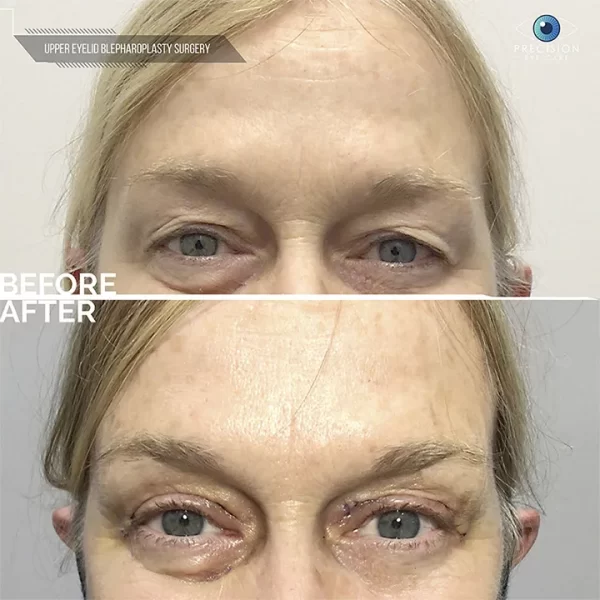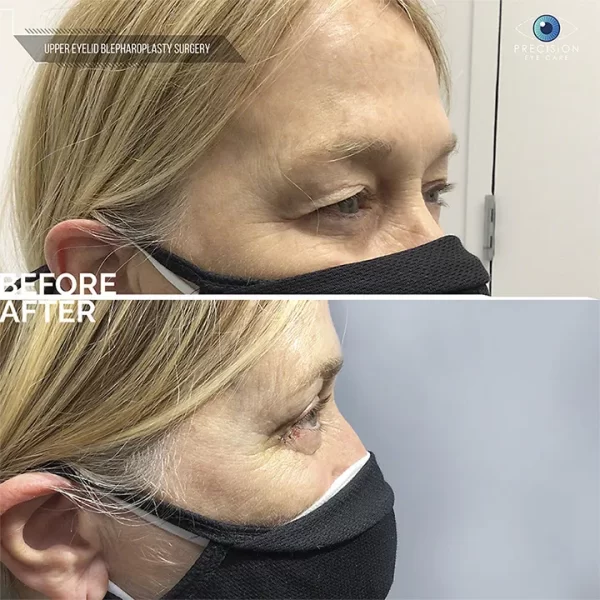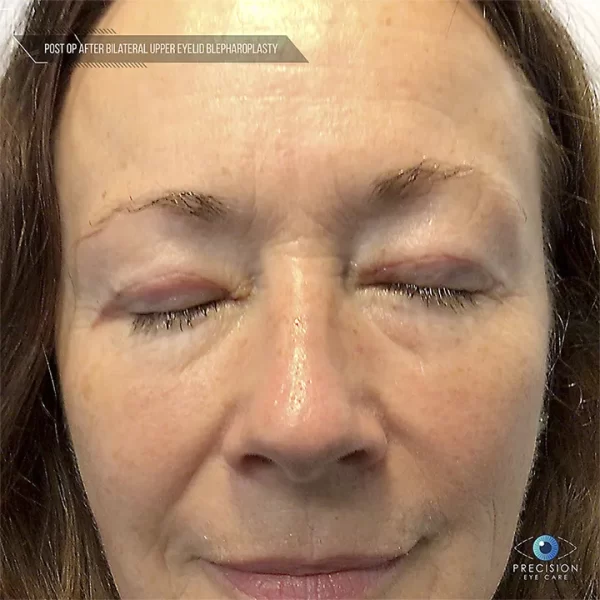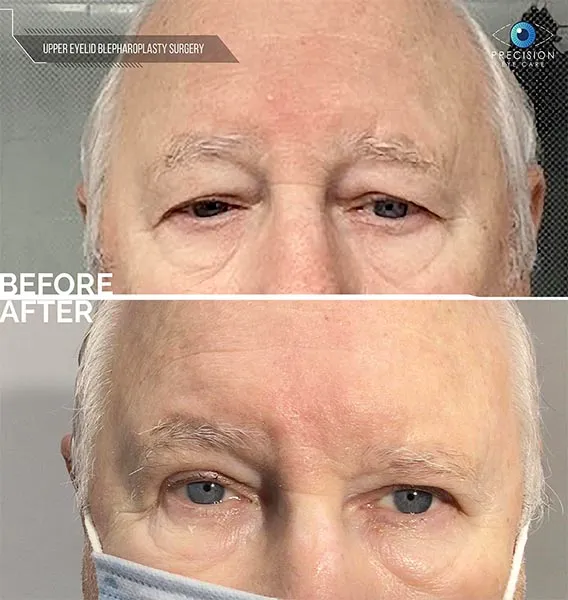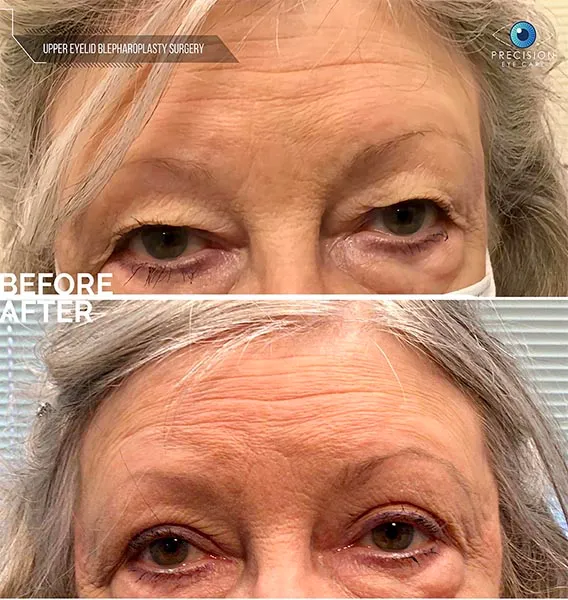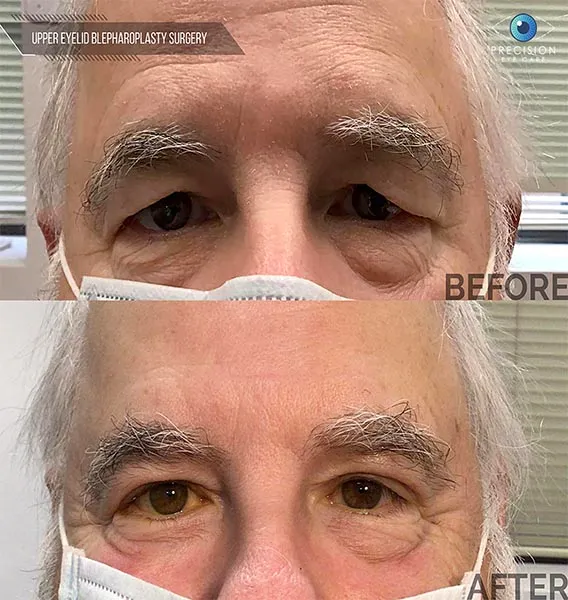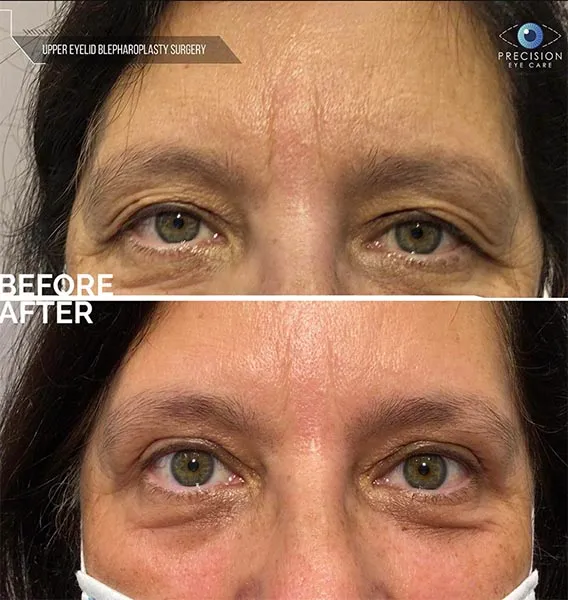Eyelid Surgery (Blepharoplasty)
As part of the natural aging process, the skin and muscles of your eyelids and eyebrows may begin to sag. This can affect both your central vision (what you see straight ahead) and peripheral vision (what you see on the sides).
Many patients experience headaches or brow aches as the forehead muscles work harder to keep the eyelids open. These muscles can become strained, causing additional wrinkles and discomfort. Blepharoplasty can help address these issues by removing excess skin and tightening the eyelid area.
An eyelid surgery (eyelid lift) can help correct these problems:
(Click on an image to expand.)
Prepare for the procedure:
A complete eye exam, external photos, and a visual field test are performed to document vision impairment from saggy eyelids.
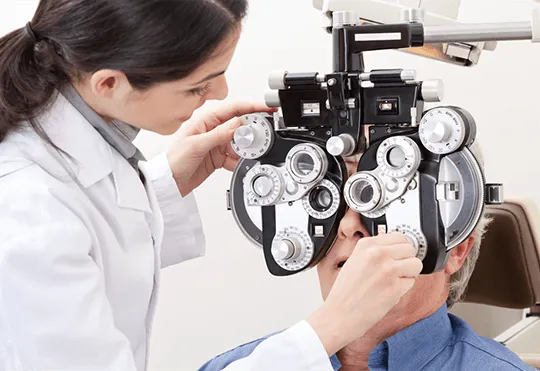
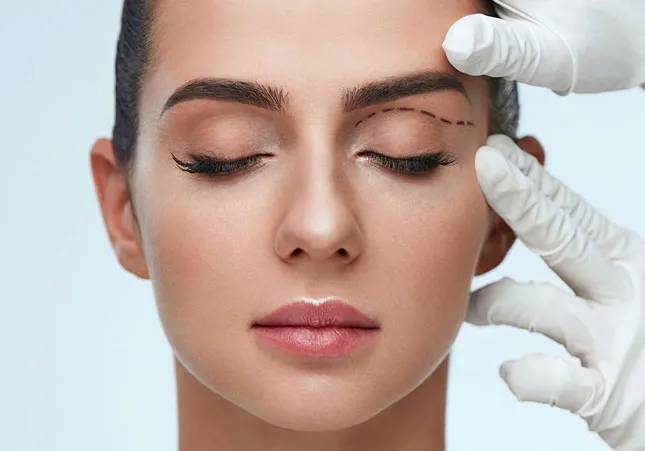
Procedure
Upper and lower blepharoplasty (eyelid surgery) is designed to remove excess skin, fat, and muscle from the eyelids. Incisions are made along the natural crease to minimize visibility and achieve a natural look. This surgery addresses both upper and lower eyelids, rejuvenating the eye area by removing sagging tissue based on individual needs.
Droopy eyelid correction
Following the procedure, the ophthalmologist will place sutures (stitches) in the eyelid to close the incision. As patients recover, they typically notice improved vision, especially if sagging eyelids were previously obstructing their line of sight. Moreover, blepharoplasty provides a more youthful and refreshed appearance by tightening the skin around the eyes and reducing puffiness. The sutures are carefully placed to ensure the incisions heal gradually, leaving minimal scarring.
Recovery:
Patients might experience swollen eyelids and bruising for few days and very mild irritation and dry eyes. To facilitate the post operative recovery Dr Romero will recommend applying a lubricating ointment and cold compresses to aid healing.
The patient can expect to be presentable to public after two weeks, although final healing can take months.
- Anticoagulants may increase the risk of postoperative bleeding.
- Aspirin products: Ecotrin®, Fiorinal®, Percodan®
- Nonsteroidal anti-inflammatory drugs: ibuprofen, naproxen, piroxicam
- Nutritional supplements: fish oil, vitamin E, gingko biloba, ginseng
- Warfarin, Pradaxa®, Plavix®, Aggrenox®

Get in Touch
For more information on Blepharoplasty, fill out our contact form or call today to schedule a consultation.





